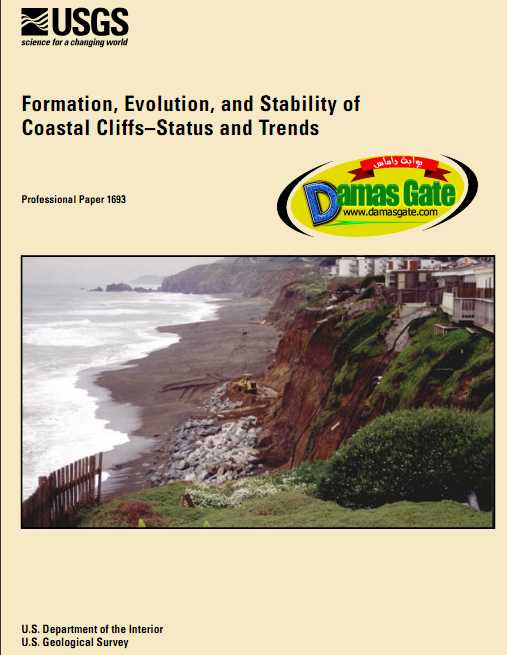Formation, Evolution, and Stability ofCoastal Cliffs–Status and Trends

Preface
The Ocean Studies Board of the National Research Council recently reviewed the U.S. Geological Survey’s Coastal and Marine Geology (USGS-CMG) program (National Research Council, 1999). One of the Board’s primary recommendations was that CMG prepare comprehensive
assessments of the nation’s coastal and marine regions, drawing on expertise not only
from within the USGS, but
also from outside agencies and academic institutions. In response to that recommendation, this report
assesses the status and trends of coastal cliffs along the shorelines of the conterminous
United States and the Great Lakes. By “status” is meant the present distribution and character of coastal cliffs,
as well as their current relevance to social issues such as coastal development.
By “trends” is meant the changes in status caused by both geological forces and human activities.
Coastal cliffs are steep escarpments at the coastline. They commonly form during times of rising sea level, such as the present, as the shoreline advances landward and erodes the elevated landmass. Coastal cliffs are a common landform, particularly on the west, northeast, and Great Lakes coasts of the United States, as well as within large estuaries. The land adjacent to coastal cliffs has been heavily developed along much of the coast, particularly in urban areas where the natural instability and progressive retreat of the cliffs pose a threat to life and property. Coastal land is permanently lost when coastal cliffs collapse and retreat landward, which is an important national issue in coastal planning, management, and engineering.
The content of this report was derived from the personal expertise of the authors and from the extensive scientific literature concerned with coastal cliffs. As a report to the Nation, it is intended for a broad audience. Both topical and regional aspects are presented. It is important to recognize that the emphasis of this report is on the geology of coastal cliffs; engineering, landuse, and regulatory issues are addressed only where there is a clear link to the geologic nature of coastal cliffs.
The editors appreciate the thorough and careful review of the entire manuscript by Alan Trenhaile and Laura Moore. Their editing, comments, and questions greatly improved the content and clarity of the final report.
Download
http://s18.alxa.net/s18/srvs2/01/For...and.Trends.rar